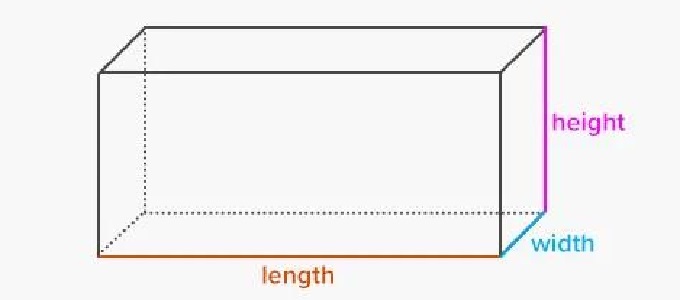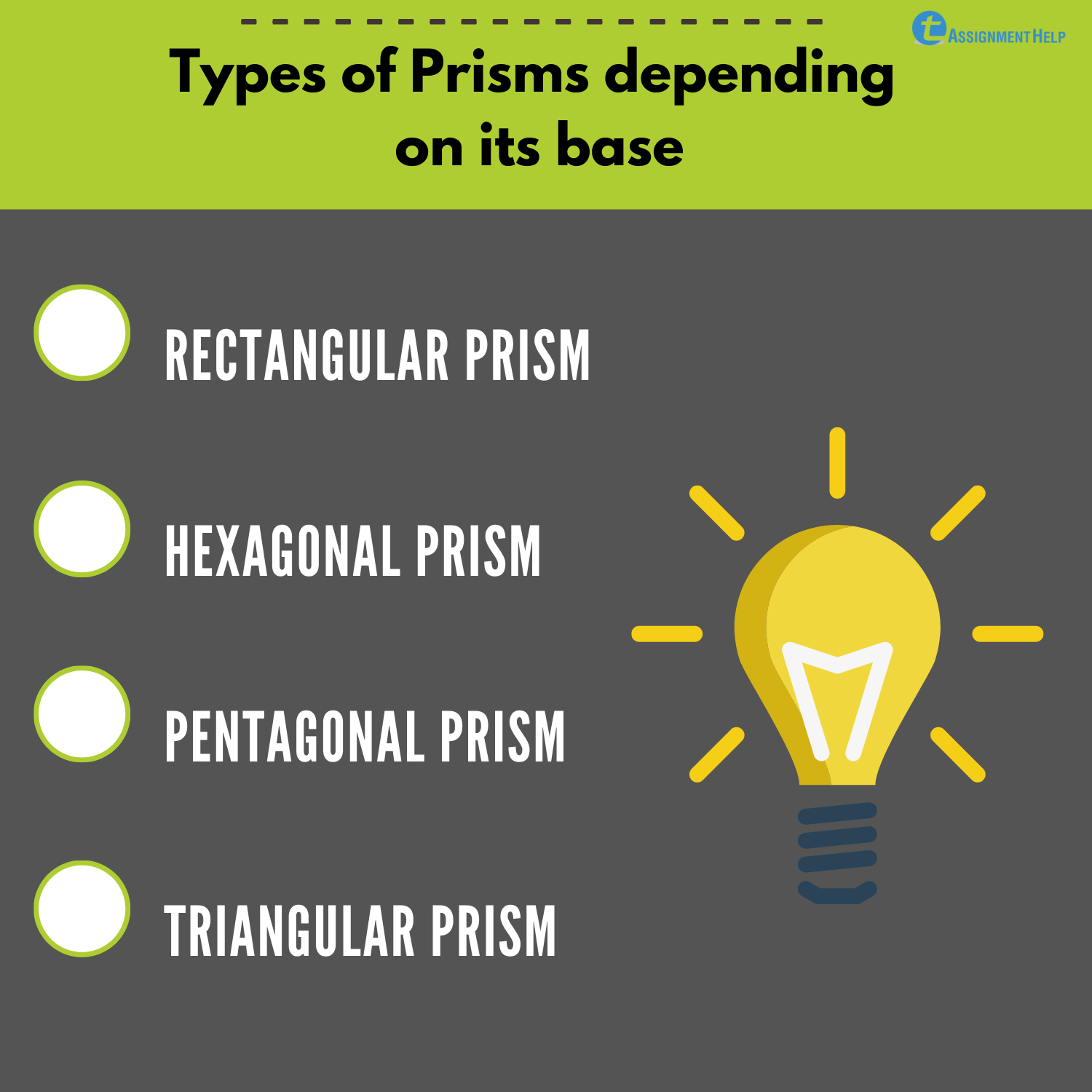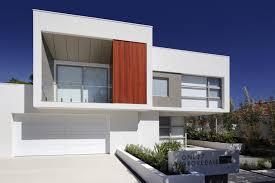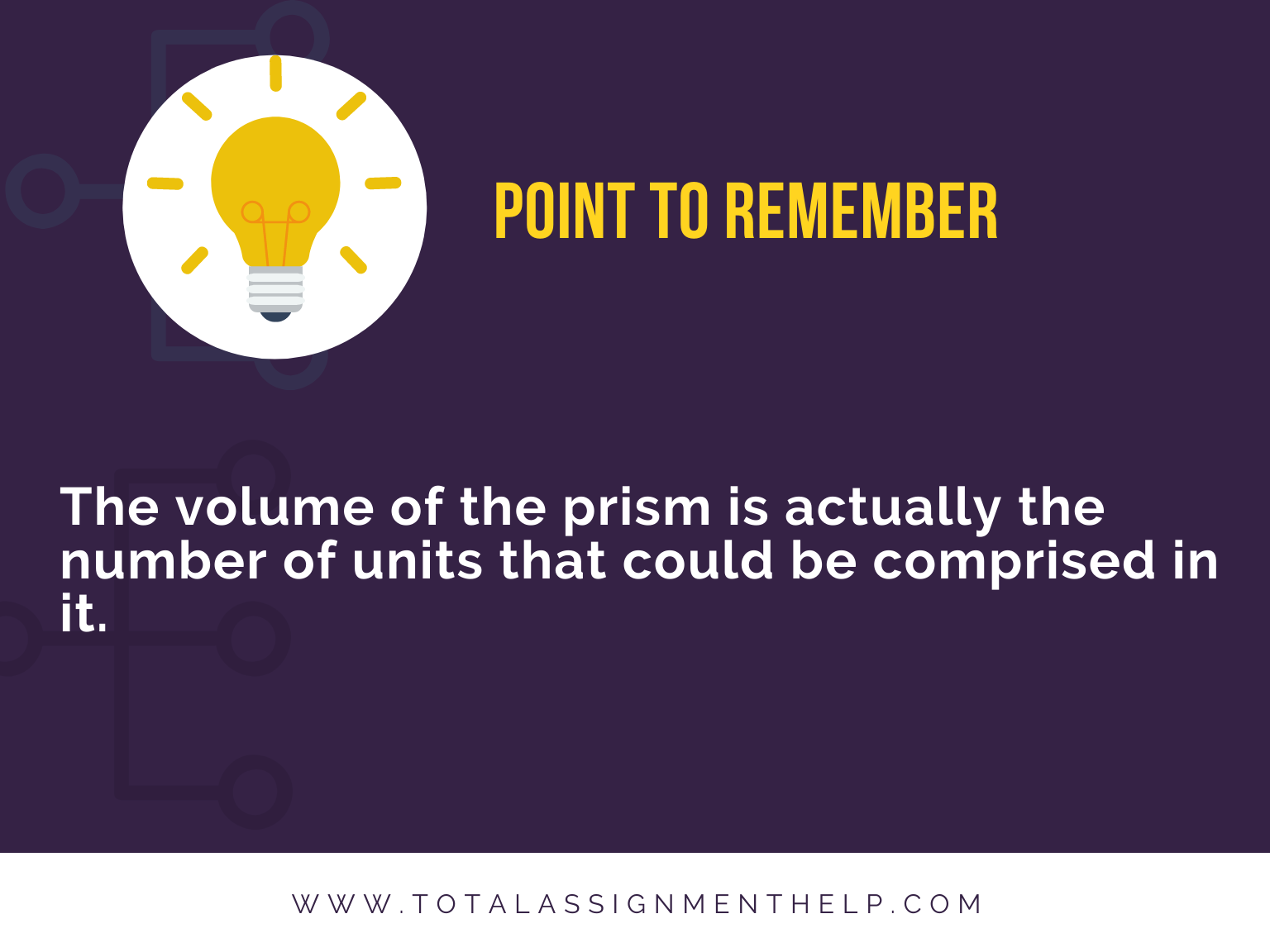Importance And Characteristics Of Rectangular Prisms

Major rules
The section of prisms holds a great significance to a student who is pursuing his degree in the discipline of mathematics. A mathematical student should have all the hold on the characteristics and rules relevant to the rectangular prism. The rectangular prism has its geometrical characteristics and is also termed as cuboid in the discipline of mathematics. While dealing with three-dimensional figures, the student should take into account various geometric rules. For calculating the volume of the rectangular prism, the measurements like its length, width, and height are highly preferable, since the availability of these dimensions would make the calculation very easy. The six-sided rectangular prism is well known to every person since it is most commonly found in our day to day life. The rectangular prism is most commonly found in the practical world in the form of a box. Don’t feel insecure if you find yourself as weak in the discipline of mathematics. You could seek the help of our experts who are well versed in providing the students with high-quality assignments that would match the standards of the top universities in the world. By opting for our assignment service, you could save much of your time and thus divert your efforts more on attending your exams.
Before discussing more the volume of the rectangular prism lets explore more about the geometric characteristics and other dimensions of it that segregate it from another prism. The rectangular prism comes under the category of three-dimensional shapes with multiple enclosed sides. The same is in the case of a simple box, in which multiple squares or rectangles are used to create an enclosed figure. If taken the instance of a box as mentioned above in this report, two squares or rectangles are taken as the base of the figure and is later connected with the adjoining sides. If taken the case of the figures in the space of 2 dimensions, the shape would have only two faces and there would be no height for it. Hence the figures, like boxes, prisms, etc. are three dimensional whose faces are the congruent two-dimensional figures to the opposite one.
As you are familiar with the norm that the faces or the opposite bases of a three-dimensional figure should be a polygon, it would be quiet often that you may consider the cylinders under the category of a prism. The conception would be wrong since the circle (base of the cylinder) doesn’t come under the category of a polygon.
All the lateral faces of the rectangular prism should possess parallel opposite sides, or if said in other words, the lateral faces of the prism should be a parallelogram. All the prisms hold the same feature and have parallelograms as their lateral sides whether it be a rectangular prism or a triangular prism. The major characteristic of a rectangle is that they possess parallel opposite sides and have perpendicular adjacent sides. If the sides would not be perpendicular to each other, then it would be evident that the sides would coincide or intersect at some point. It should also be noted that the opposite faces in the prism should be congruent with each other. If the condition is not satisfied by a three-dimensional figure, then it would never be called or classified as a prism. Even if the prism is dissected parallel to the base, you would observe that the new side would be congruent to the base. This condition would only be satisfied if the faces of the prism are congruent.
If taken an instance from the practical life, the loaf of bread represents roughly a rectangular prism. If taken a slice parallel to its face, it would resemble the face of bread exactly. The shape of the slice would not change wherever you cut the loaf, the only condition is that the cut should be perpendicular and parallel.
Various type of Prism in the genre of geometry
When you have mastered the basic geometric rules regarding the rectangular prism, you should explore more the untouched section of the discipline which would turn out to be a very important content for the research proposal. The inclusion of interesting and unique content in the research proposal would help you in fetching high marks. Below are given some varieties of prisms.
Oblique prisms
In some sort of prisms, the angle between the sides of the faces is not always the right angle. Although the faces and its sides would be in the slanting position, all the faces would be congruent to each other and have the shape of a parallelogram.
Regular Prism
In these sorts of a prism, all the faces of the polygon are regular and congruent in nature.
Right Prism
In these sorts of the prism, both the faces and lateral faces would be in the form of a rectangle or square. The angle between the two sides should hold a measure of 90 degrees. In this case, also the faces would represent the parallelogram. Since their corners are right angle in nature, these parallelograms specifically the rectangles. The prisms like Cubes also comes under the category of a right prism. In a cube, all the sides and edges are equal in length. The uniformity in all the sides and faces is the sole difference between a cube and a rectangular prism.
The prisms could also be classified by the nature of the base it possesses. Below are given such division of prisms.
- Rectangular prism
- Hexagonal prism
- Pentagonal prism
- Triangular prism
Frequently asked questions regarding the rectangular prism
To be a well-informed mathematic student, you should take into account that the solid shape of the rectangular prism comes under the category of the three-dimensional figure with congruently opposite six faces (These faces are identical rectangles in shape). To gain a very thorough knowledge if rectangular prisms, the student should know all the specific theories and formulae relevant to the rectangular prisms. The formulae which help in calculating the volume and area should be given high prominence. This would help extensively in your examination since it is the most repeatedly asked problem in the examination.
Let us discuss the basic characteristics of rectangular prisms. As discussed above, it is the 3 rectangular lateral sides and 2 rectangular sized figures which combinedly creates the rectangular prism. Which makes it is quite similar to the three-dimensional figure of the cube. The volume of the rectangular prism could be represented using the cubic units. The volume of the prism is actually the number of units that could be comprised in it. The generic way to find the volume of a prism is by multiplying the base area with the height of the prism.
Now we perceive that you have understood well about the calculation of the volume of the rectangular prism, let us talk about the calculation of the surface area of the rectangular prism. The concept of the surface area is the actual measure of the sum of the areas of all the faces of the prism. The surface of the rectangular prism could be represented using the square units. It could be done by adding the area of the base and the lateral surface. You could calculate the surface area of the rectangular prism using the below-given formula.
Total Surface Area = (Base x Length) * 2 + 2 * (Height X Length) + (Breadth x Height) * 2
The methodology of graphing down a rectangular prism
From now you should have known that the base of the rectangular prism should be rectangular in shape with all its corners at a right angle. The rectangular prism has a total of 6 faces. If the provided rectangular prism has no right-angled sides or is not aligned to its opposite sides could be described as an oblique or tilted prism. To make a rectangular prism, you should gather 2 congruent sides which would act as the bases and six rectangular faces that would act as the lateral sides. The best way to create a rectangular prism in a theoretical way is to juxtapose the cubes one above each other. Roughly saying, the rectangular prism could be created by using the cubes as the basic building block.
Let s take the instance of the rectangular prim made of paper so that the rectangular prism could be built accurately with lesser effort in an easier manner. Before building a rectangular prism, you should consider and look carefully at the measurement and dimensions of the rectangular prism. You should mark the breadth, length, and height of the prism accurately. First of all, you should start cutting the base of the prism by considering its breadth and length. The cutting of the bases should be done after drawing the rectangular bases on the paper to be cut.
By using a pencil or a marker, draw a rectangle with the suggested breadth and length on the given paper. You should draw another identical rectangle so that they could be placed as opposite base faces. For drafting an accurate rectangle, use the tools like a ruler and protractor. Each dimension of the rectangle should be accurately matching with the other rectangle drawn, or in other words, the two drawn rectangles should be congruent in nature. Even after drafting the rectangles, you should check again the measure of length and width by using a scale or a ruler. Since it is a rectangle you should also check the angles between the sides by using the protractor. It should be kept in mind that the angle between the length and breadth should be a right-angled one. Only after ensuring that both rectangles are exactly the same and congruent to each other you should cut out the paper according to the drawn figure.
Now in the next step, you have to cut out the rectangles which would be the vertical lateral faces of the prism. You have to cut out two different sets of rectangles respectively whose length would be equal to the intended height of the prism and the breadth should be equal to the respective breadth and length of the rectangles taken as the base of the prism. To keep the lateral sides, i.e. the two different sets of rectangles cut according to the length and breadth of the base should be pasted together using a glue or most preferably a cello tape. The rectangles with identical shapes should not be placed adjacently while pasting them. The identical rectangles should be placed alternatively and then after should it be pasted together. After this paste the resulting column on by keeping the length part and breadth in respective to those of the base rectangles. After placing the base rectangles on both sides of the column please paste them using the cello tape. Ensure there are no gaps in between the paper pieces by wrapping the cello tape again on the prism.
After completing the process of pasting, the resulting figure would resemble a rectangular prism.
At last, let us check some of the crucial properties of the rectangular prism.
- The cross-section of the rectangular prism would always be a rectangle
- The rectangular prism would posses 6 faces, eight vertices, and 12 sides.
- The opposite faces of the rectangular faces would always be identical and congruent in nature.
The basic method for finding the volume of a rectangular prism would be
Volume = Height x length x width
The above images show some real-life example figures of the application of rectangular prism. You could observe that the basic building blocks used in building the constructions are rectangular prisms. Hence the study of rectangular prisms contains a lot of significance and importance in the discipline of engineering and mathematics.









